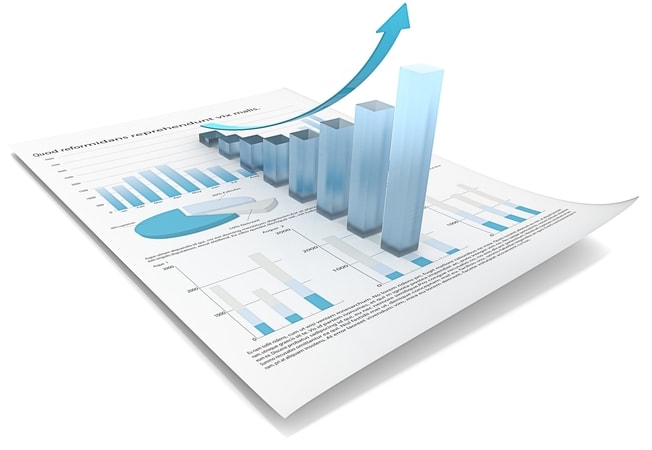Factors to Consider When Using AMA Writing Style
The American Medical Association formatting and citing style are mostly used within the biological and health sciences for scientific publishing. Familiarizing with the AMA style is not only important in tackling classwork assigned to scholars in programs that use AMA writing style, but also in comprehending the language of research used in that particular field.
It is important to confirm the specific formatting style for papers with one's supervisor; such as line spacing, margins, fonts, intents, text style, graphs, tables, and even title pages. The stylistic issues highlighted in the AMA style manual and proper citation of references must be considered. This article provides information on the basic factors to consider when using AMA writing style.

General Guidelines on Formatting Recommended in AMA
The following are the formatting guidelines as stipulated in the AMA style. However, it is worth noting that, these guidelines are used only when there are no specific guidelines given for the assignment. Otherwise one must always refer to instructions given respectively.
1. Margins
The AMA writing style recommends one-inch margins within the text, while the right margin remains unjustified. Columns should not be used in the AMA style.
2. Line Spacing
The lines in the main text of the writing should be double-spaced according to this writing style. However, all the other parts such as the abstract, titles, headings, tables, figures, and references should be single-spaced.
3. Font Type and Size
The recommended font type according to AMA writing style is the Times New Roman, font 12-point.
4. Indents
For new paragraphs, half-inch indents are used.
5. Page Numbers
The numbering of pages should start with the title page. The page numbers should appear in the top-right corner of the page throughout the document.
6. Page Headers
The AMA writing style recommends that, at the top-left corner of the page, one should write the title of their document.
7. Title Page
Some assignments require the inclusion of the title page whereas others do not. For those that require it, at the center of the first blank page of the writing, the following should be included:
- The document title.
- Name of the scholar.
- Name of the instructor or supervisor.
- Title of the course in pursuit.
- Specific date of submission.
When there is no title page requirement for the assignment, one should write the following on the first page, at the right corner:
- Name of the scholar.
- Name of the instructor/supervisor.
- Title of the course.
- Date of submission.
- In-Text Citations
The AMA writing style requires every information that is not one's original idea included in the writing must be correctly cited using superscript numerals. These numerals must correspond to the citation provided in the reference list. Under circumstances whereby a single reference is used severally within the writing, then the same number is used for it throughout the paper.
The superscript numbers should be inserted after the quotation, fact, or idea being cited, outside commas and periods, or inside colons and semi-colons. Without spacing, commas should be used to separate the numbers in case there is more than one source for a single idea. The superscript numbers are a simple way to inform the readers which ideas are borrowed how to retrieve them from the source.
8. The Reference List Section
The list of references should include all the sources referenced in the text. The in-text citation must correspond to the components of the reference list.
General AMA Rules in Formatting the List of References
The following are the general recommendations for the AMA writing style to format the reference section.
- Numbers are used to the listing of items in their order of citation within the text.
- For references with up to six authors, all should be listed. If the number of authors exceeds six, only the names of the first three are given, followed by "et al."
- In cases where no author is provided, the title appears first in the list.
- Abbreviated titles should be used for periodicals such as journals, newspapers, and magazines.
- For each reference, a proper citation must be used.
Other Things to Consider When Using AMA Writing Style
Other factors that must be deliberated on include:
1. Initials, Acronyms, and Initials
The AMA writing style discourages the use of acronyms, abbreviations, or initials, except in some terms which are well recognized, and accepted units of measurements.
2. Numbers
When using the AMA writing style, it is recommended that one uses numbers in all writing, with an exception of the following scenarios:
- When the title or the sentence starts with a number.
- If the number involves a common fraction.
- When the number is written in words in titles or quotations from the sources.
- In cases where a sentence requires multiple numbers to be written next to each other, one of the numbers should be written in words.
3. Time
The AM or PM is written in small capitals when specifying the time of the day. Most times the conventional 12-hour clock time is preferred.
4. Dates
If dates are included in the text, AMA style recommends that only the day and the year are written in numbers, while the month is written in words. This exempts situations where the dates are being included in tables. Only then should the month be put in numerals.
5. Measurements
When writing measurements, the SI unit standards should be used. No commas should appear in longer numbers.

Organizing Sources in the Reference List
The reference list should be organized numerically according to the order in which the sources are cited in the text. Within the citations, the AMA requires single-spacing while double-spacing is used between the citations. Five essential elements make up each reference. These include the name of the author, title, publication information, date of publication, and page numbers as discussed below.
1. Author's Name
The reference list should start with the surname of the author followed by the initials. There should be no spacing or periods between them. If the source has up to six authors, they should all be included and separated by a comma. For references exceeding six authors, only the first three authors are named, followed by "et al."
2. The title
The AMA style stipulates that one should capitalize only the first letter of the first word, proper nouns, and abbreviations for titles of articles and chapters. For subtitles, the first letter of the first word can only be capitalized if it is a proper noun. When writing other titles like for books, all words but articles, joining word, or those that are less than three letters in length.
3. Publication Details
Publication details are formatted depending on the type of source, as explained below:
- Books
In AMA citation for books, the title should be followed by the edition number, the city and state of publication, and the publisher's name in that order. A colon should be used to separate the name and location of the publisher; though there is no need to include the name of the state in the location when it is already included in the publisher's name.
- Magazines and Journals
For journals and magazines, one should list the volume number after the year of publication. A semicolon is used to separate them with no spacing. The issue number is enclosed in parentheses and follows the volume number without space from either side. One should specify the month before the year when no issue number is given. The month or issue number should only be included when volumes are numbered consecutively.
4. Date of Publication
According to the AMA writing style, the copyright year of publication should be used unless guided otherwise. The year should be written in full without short forms.
Formatting Publication Dates for Books
When writing the publication dates for books, the year of publication should follow the name of the publisher, and the two elements should be separated using a semicolon.
- Magazines and Journals
For journals and magazines, one should list the year of publication after its title, before writing the volume number. A space should separate the year of publication and the journal-title, with a period appearing at the end.
- Newspapers
When citing from newspapers, one should write the full publication date. The month, day, and year of publication should appear in that order. This information is inserted after the paper's name, just before writing the page numbers. With a single space on the side of the numbers, the date of publication and page numbers are bordered by a colon.
5. Page Numbers
The page numbers for different sources are inserted using Arabic numerals unless there has been the use of Roman numerals within the text. If the author of the sources has not provided page numbers, chapter numbers can be used instead.
- Page Numbers for Book Chapters or Articles
Followed by a colon, the page numbers for this category of sources are inserted after the year of publication, followed by a full stop. No spacing should appear on any side of the colon.
- For Journals and Magazines
The specification given by the AMA writing style in formatting the page numbers for magazines and journals is that the page numbers should be inserted after the issue number, followed by a period.
- Page Numbers in Newspapers
Followed by a period, page numbers in newspapers should be listed after the date of publication which is followed by a colon; with no space appearing from any side of the colon. A comma is used to separate page numbers for articles that proceed from one page to the next.
How to Format the Different Sources in a List of References
Sources may be published or unpublished works used as references for one's assignment or writing. Below is a guide on how exactly to format various published sources.
Books
Books are categorized according to the number of authors, whether edited, chapter, or encyclopedia articles as listed below:
- Books with one author; one should list the name of the author, book title, city/state of publishing, the publisher, and publishing year, in that order.
- For books with multiple authors; the authors' names should be listed in light of the guidelines given for sources with more than six authors, title, city, state of publication, the publisher, and the year it was published respectively.
- When the author is an organization, one should start the reference entry with the name of the organization, book title, city, state, publisher, and the year of publication. The elements must appear in that order in the list of references.
- When the book has been edited; the entry should begin with the author(s), followed by "ed," title, city, state, publisher, and the year of publication in that order.
- When citing from a chapter or an article in an edited book; one should start with the author(s) of the chapter followed by the title of the chapter, editors name, ed, book title, city, state, publisher, year of publishing, end the page or chapter number(s) followed by a period.
Magazine or Journal Articles
The AMA style stipulates that, when using magazines or journals as references, one should use the Digital Object Identifiers (DOI). In case there is no DOI for the material, the URL for the particular article can be used instead. The elements in journals and magazine references should be formatted appropriately, depending on whether the material has one or multiple authors, with or without DOI.
Electronic Resources
Electronic sources include materials such as eBooks, websites, blogs, organizational or government reports, and conference proceedings. When making entries of these materials in the list of references, they should be strictly formatted based on the guidelines given in the AMA style manual.

Formatting Tables and Figures in AMA Style
In health or biological sciences, tables and figures are a convenient and potent method of representing information in a writing. These must be formatted properly to correctly convey the desired information visually. Each table must contain the three features discussed below:
1. Label
All the tables and figures representing information in an AMA written material should be numbered consecutively in their order of appearance within the text. They should be referred to by their label when mentioning them in the paper. Footnotes can be created using algebraic superscripts when need be.
2. Title
The titles given to the tables and figures must accurately describe the data they represent.
3. Citations
One should always give citations for all the tables and figures consulted, except when such figures or tables are their original ideas, not borrowed from any outside source.
The AMA-style rules regulating the use of punctuation marks must be adhered to when making entries in a reference list. Every scholar pursuing a course or program has to edit a paper in AMA style during their course. It is therefore very important to be equipped with the necessary skills from online articles such as this one or seek guidance from instructors and AMA-style writing experts. In case they are not in a position to do the writing and formatting in the AMA style, scholars can seek AMA style writing help from professional AMA style writers. These experts are available online through their websites or even physically where one can visit to buy AMA writing services.
It is better to spend money to hire a person to format in AMA writing style than to face the disappointment of a rejected assignment because of the wrong formatting. It is therefore important to always seek AMA-style writing help whenever one is stranded or not sure if they are using the correct writing style for their papers. However, when looking for help, considering the credibility, consistency, and reliability of the professional AMA style writers is necessary to be guaranteed the best AMA paper writing services. The better the services, the better the grades scored and the impression left on the readers and vice versa.





